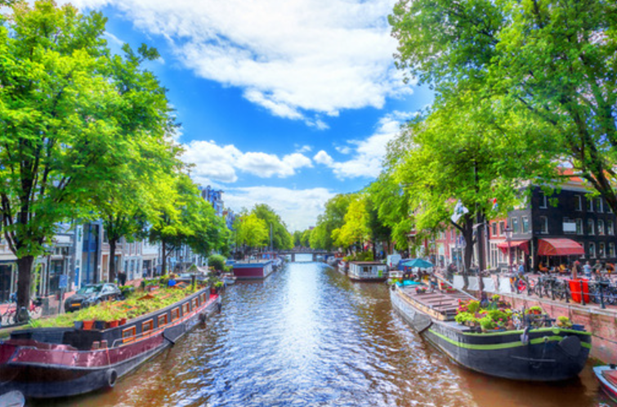Just added my Connectography Speech of Netherlands!
Check out the video and let’s learn about Netherlands together.
Connectography Speech for World Environment Day 2025 | Somin Park ( Netherlands) | 049
The Netherlands literally means "low
lands," and it is famous for having about 25% of its territory below sea
level. Two-thirds of the country consists of artificially- reclaimed land, and
these areas are called "polders" — a low-lying area surrounded by an
embankment that can control water levels. In the Netherlands, most villages are
protected from water by wide dikes, and the entire country is interconnected by
an intricate network of canals.
Because there is little mountainous terrain and strong winds blow year-round
from the North Sea, windmills that utilize wind power developed early on. The
southern and eastern parts of the Netherlands are mostly composed of plains and
a few rolling hills, while the western and northern parts are lowlands. These
lowlands form a delta area encompassing the Rhine, Meuse, and Scheldt rivers,
and are protected by sand dunes and man-made dikes.
Are there any canals, dams, and windmills in your area as well? If you have any, can you please take a picture and send it to me? Also, I heard that the Netherlands has developed a share house because of its high population density, and I want to know if it’s real.
Hi! How have you been lately? Here in Korea, it's getting warmer as April begins, and flowers are starting to bloom. In Seoul, the capital, the cherry blossom festival is already in full swing. Since I live on an island, the flowers here seem to bloom a bit later. It looks like it will start getting hotter from June, and especially these days, because of climate change, summer might even last beyond September. How about the Netherlands? I know that the Netherlands is especially famous for tulips and holds many festivals related to them. Could you tell me more about that?
When I think of the Netherlands, what often comes to mind are its clean natural environment and commitment to sustainable living through renewable energy. In reality, the Netherlands is actively addressing the climate crisis across various sectors, including climate and air quality, energy, sustainable urban development, agriculture, and food systems. What surprised me during my recent research is that about 4 million people—one fifth of the population—are members of environmental organizations such as Greenpeace and WWF. This shows how deeply environmental consciousness is embedded in Dutch society.
The Netherlands is a low-lying country located in the lower reaches of rivers such as the Rhine, Meuse, and Scheldt. Out of a total population of 17 million, approximately 9 million people live below sea level, making the country particularly sensitive to water-related policies. Since 2009, the Dutch government has been establishing a National Water Plan every six years, focusing on sustainable water management about climate change, population growth, economic development, and investment. At the national level, water policy is organized around key themes such as flood safety, freshwater supply, new infrastructure, and urban restructuring. Because of this, if I visit the Netherlands, can I see dams and various eco-friendly energy facilities? Also, Amsterdam, the capital, is known for its environmentally friendly initiatives. Over 60% of inner-city transportation is done by bicycle, and tourists can often be seen taking sightseeing tours on electric boats. I'd love to learn more about Amsterdam’s sustainable and eco-conscious urban design!
HI! I'm Park So min from Korea, Incheon. I'm attending Haneul Academy and I would love to explore different countries and cultures around the world. I love swimming and playing violin. I'm also interested in studying agriculture and plant fields. Thank you:)






